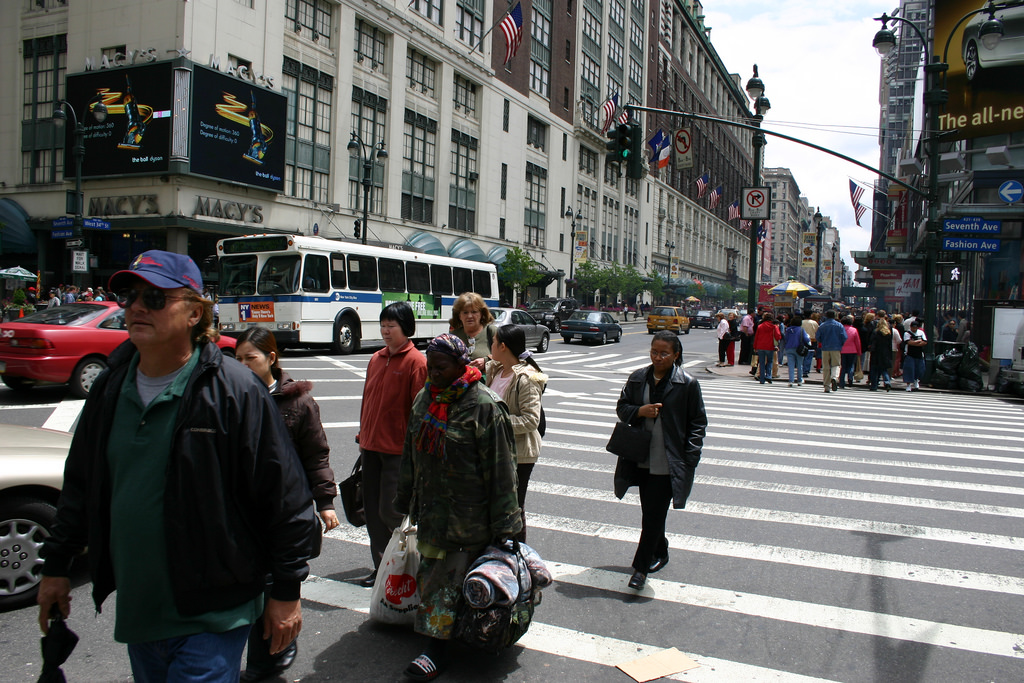The rich are getting richer and the poor are getting poorer in the United States.
The top 1% of families took home an average of 26.3 times as much income as the bottom 99% in 2015, according to a new paper released by the Economic Policy Institute, a non-profit, nonpartisan think tank in Washington. This has increased since 2013, showing that income inequality has risen in nearly every state, CNBC reported.
The paper looked at the income of families across the nation and assessed inequality at the state, metropolitan area and county level using data from the IRS. The incomes are averages of the IRS summaries of taxpayers in each income range.
To be in the top 1% of earners in the United States in 2015, a family would have to have brought in $421,926 in pre-tax. What qualifies as the top 1% varies by each state, and the states with the highest thresholds are California, Connecticut, District of Columbia, Massachusetts, New Jersey and New York.
Nationwide, the average income of the bottom 99% is $50,107 per family. This also varies depending on geography.
By looking at income data on the state and county level, it’s possible to get a more local picture of the trend of inequality.
When inequality came up, “often the conversation would turn to, well, that’s New York City, it’s not my state,” said Mark Price, a labor economist at the Keystone Research Center and co-author of the EPI paper.
Persistent Problems in All States
“Rising inequality affects virtually every part of the country, not just large urban areas or financial centers,” said Estelle Sommeiller, a socio-economist at the Institute for Research in Economics and Social Sciences in France and co-author of the paper. “It’s a persistent problem throughout the country—in big cities and small towns, in all 50 states.”
Between the years 2009 to 2015, the incomes of those in the top 1% grew faster than the incomes of the bottom 99% in 43 states and the District of Columbia. In nine states, the income growth of the top 1% was half or more of all income growth in that time period.
Asians Worst Affected
This trend is a reversal of what happened in the United States in the years during and after the Great Depression. From 1928 until 1973, the share of income held by the top 1% declined in nearly every state.
The report from the EPI attributes that growth to a different atmosphere for workers, where the minimum wage generally was steadily rising and they were able to join unions and bargain for rights.
Today, income inequality in the US is greatest among Asians. From 1970 to 2016, the gap in the standard of living between Asians near the top and the bottom of the income ladder nearly doubled, and the distribution of income among Asians transformed from being one of the most equal to being the most unequal among America’s major racial and ethnic groups.
In this process, Asians displaced blacks as the most economically divided racial or ethnic group in the US, according to a new Pew Research Center analysis of government data.
While Asians overall rank as the highest earning racial and ethnic group in the US, it is not a status shared by all Asians: From 1970 to 2016, the gains in income for lower-income Asians trailed well behind the gains for their counterparts in other groups.
A Yawning Gap
The average annual income in 2015 of a household in the top 1% of US earners was $1.32 million, more than 26-times the average of the bottom 99%, where the average was just over $50,000. In order even to qualify as a one-percenter, a US household needed an annual income of $421,926, 247Wallst reported.
The most unequal metro area was Jackson, Wyoming, where a one-percenter earned 132 times the average of the other 99%. Teton County, Wyoming—where Jackson is located—was the most unequal county: the top 1% (average income of $22.5 million) earn more than 142 times the average ($158,290).
There was a wide difference in the amount of income it took to be counted among the top 1%. Among the states, the income threshold for making it into the one-percent class was $700,800 in Connecticut, the highest threshold among the 50 states and the District of Columbia. The second-highest threshold was the District of Columbia ($598,155) followed by New Jersey ($588,575), Massachusetts ($582,774), New York ($550,174) and California ($514,694).


